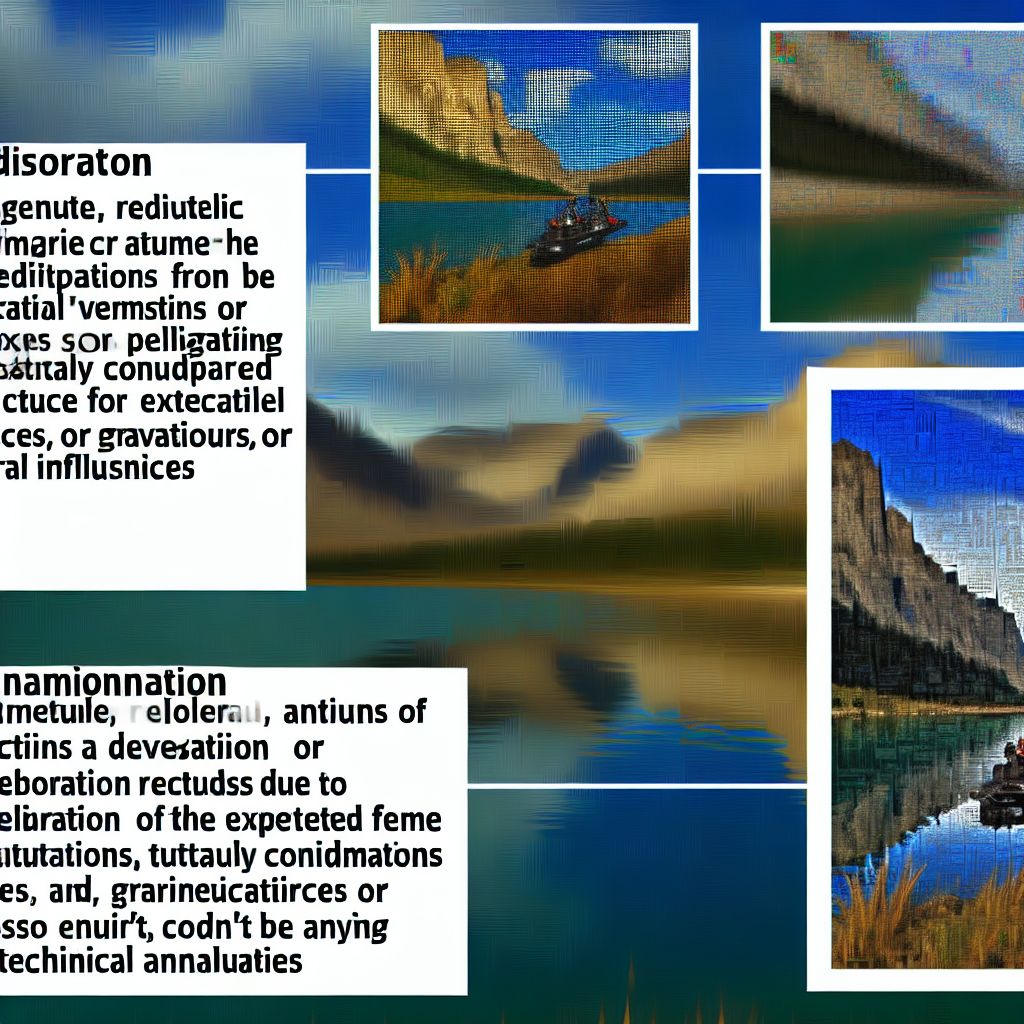In the Space industry context, distortion refers to any alteration or Deviation from the expected shape, signal, or trajectory due to various factors, including environmental conditions, gravitational forces, or technical anomalies. Distortion can affect spacecraft components, optical systems, communication signals, and the Accuracy of measurements and observations conducted in space. Managing and minimizing distortion is crucial for the success of space missions, ensuring the reliability of data, the Performance of spacecraft systems, and the safety of space operations.
Description

Distortion in the space industry can manifest in several ways:
- Optical Distortion: Changes or errors in images captured by telescopes or spacecraft cameras caused by imperfections in optical components or the influence of the Earth's Atmosphere.
- Signal Distortion: Alterations in the Transmission of communication signals due to interference, atmospheric conditions, or the spacecraft's orientation, affecting the quality and reliability of data transmission.
- Structural Distortion: Deformations in spacecraft structures resulting from thermal expansion, Mechanical Stress, or the impact of micrometeoroids, which can compromise the integrity and functionality of the spacecraft.
- Gravitational Distortion: variations in the trajectory of spacecraft or Celestial bodies caused by gravitational forces, especially when navigating close to large masses like planets or moons.
Application Areas
- Satellite Communication: Ensuring clear and reliable signal transmission for Satellite TV, internet services, and GPS systems.
- Astronomical Observations: Producing accurate and undistorted images of celestial objects for Research and Exploration.
- Spacecraft Design: Developing structures and materials that can withstand or compensate for distortions caused by environmental conditions and operational stress.
- Navigation and Trajectory Planning: Calculating precise trajectories that account for gravitational influences and potential distortions to ensure accurate spacecraft navigation.
Risks
- Data Misinterpretation: Distorted signals or images can lead to incorrect conclusions or analyses in scientific research and observations.
- Communication Failures: Signal distortion can disrupt communication with spacecraft, potentially leading to loss of control or data.
- Mission Compromise: Structural distortions can Endanger the mission by affecting the spacecraft's performance and the safety of astronauts on manned missions.
Examples
- Hubble Space Telescope: Before the installation of corrective optics, the Hubble Space Telescope suffered from spherical aberration, a type of optical distortion that blurred images.
- GPS Signal Correction: Techniques like Differential GPS are used to correct signal distortions caused by the Earth's atmosphere, improving the accuracy of location data.
- Thermal Distortion in Spacecraft: Spacecraft components are designed with materials that have low thermal expansion coefficients to minimize distortion caused by Temperature fluctuations in space.
Similar Terms or Synonyms
- Aberration
- Deformation
- Interference
Weblinks
- psychology-lexicon.com: 'Distortion' in the psychology-lexicon.com
Summary
Distortion in the space industry encompasses a range of alterations that can impact the performance and reliability of space missions. Whether it's through the lens of a telescope, the structure of a spacecraft, or the transmission of data across the Cosmos, understanding and mitigating distortion is essential for achieving mission objectives and advancing our exploration and use of space.
--
Related Articles to the term 'Distortion' | |
| 'Fault' | ■■■■■■■ |
| Fault in the space industry context refers to a Malfunction, defect, or deviation from expected performance . . . Read More | |
| 'Signal Interference' | ■■■■■■■ |
| Signal Interference: Signal interference in the space industry refers to the Disruption or Degradation . . . Read More | |
| 'Clarity' | ■■■■■■■ |
| Clarity in the space industry context generally refers to the level of detail and sharpness in the visual . . . Read More | |
| 'Impairment' | ■■■■■■■ |
| Impairment in the space industry context refers to any factor or condition that negatively affects the . . . Read More | |
| 'Aberration' | ■■■■■■■ |
| Aberration in the space industry context refers to distortions or deviations in the Appearance or position . . . Read More | |
| 'Precision and Consistency' | ■■■■■■■ |
| Precision and Consistency: Precision and consistency are Critical concepts in the space industry, encompassing . . . Read More | |
| 'Halo orbit' | ■■■■■■ |
| A Halo Orbit is a type of three-dimensional periodic orbit around the Lagrange points in a two-body system, . . . Read More | |
| 'Complexity and Reliability' | ■■■■■■ |
| Complexity and Reliability: In the space industry context, complexity and reliability refer to the intricate . . . Read More | |
| 'Safety and Reliability' | ■■■■■■ |
| Safety and Reliability in the space industry refer to the measures, practices, and standards that ensure . . . Read More | |
| 'Variability' | ■■■■■■ |
| Variability in the space industry context refers to the changes or fluctuations in environmental conditions, . . . Read More | |
